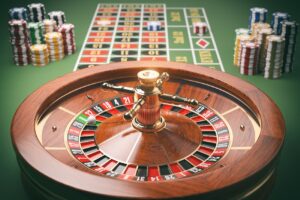The Evolution Of The Industry And The Popularity Of Online Betting Games

Fey was a brilliant innovator as well as a savvy businessman. He understood he had produced something in tremendous demand, so instead of simply selling his slot machines, he paid a 50 percent commission fee to the betting halls that wanted them. Despite being approached by a number of different manufacturers, he refused to sell the rights to distribute or develop the games to anybody else. The Liberty Bell was so popular that Fey had to work overtime just to keep up with demand, mass-producing the machines. The Liberty Bell’s reels included stars, bells, horseshoes, as well as the more common hearts, spades, clubs, and diamonds. The game cost five cents to play, and the payouts were determined by the results displayed on the three rotating reels. In most cases, a player might earn up to twenty coins for hitting three bells and as little as two coins for hitting two horseshoes, with other variations in between.
From the Liberty Bell to the Operator Bell, we’ve come a long way.
In 1907, Fey formed a cooperation with the Mills Novelty Company. They created a new version of the game called the Mills Liberty Bell, which featured a cast iron machine with face card symbols such as the Jack, Queen, and King on the reels. This machine was also the first to have a bell that would ring when a winning combination was displayed, though it was eventually removed from the game. This design, on the other hand, would become the industry standard for current slot machines.
Changes in the Industry in the 1930s
In the 1930s, the Mills Novelty Company made a number of adjustments to its slot machines, which helped them gain even more popularity. First and foremost, as previously stated, the bell was removed. The Silent Bell was the name given to this version of the game. Double jackpots were also introduced, giving players the opportunity to win the jackpot twice. During this time, the machines’ appearance changed as well. To make the slot machines more appealing and thrilling, various motifs and patterns were made on the external wood cabinets.
Era of the Electro-Mechanical
Up until the late 1950s, slot machines were mechanical in nature, but in the late 1950s, a new sort of electro-mechanical machine was developed. With new machines like the Big Bertha and Super Big Bertha launched to the casino floor, slot machines were at their zenith of popularity. The Big Bertha series was a massive machine that cost more than $150,000 to build and ran on a five-horsepower motor.
The Age of the Computer
The 1980s were the next epoch in which the development of slot machines progressed. At the time, a new business called Sircoma created a video card betting slot machine, which generated quite a stir in the gaming sector. However, it was not an instant hit, with many players wary of the video portion of the game. Because they couldn’t see the reels rotating, they were concerned that the game would not be truly random. However, the fears faded over time, and the game became a success. Progressive slots and straight slots are available at over 2000 online betting games. There are also online betting completely dedicated to slots. With these internet games, you can bring the bells, whistles, and excitement of a slot machine straight into your living room. Check out the jili slots now to know more!




